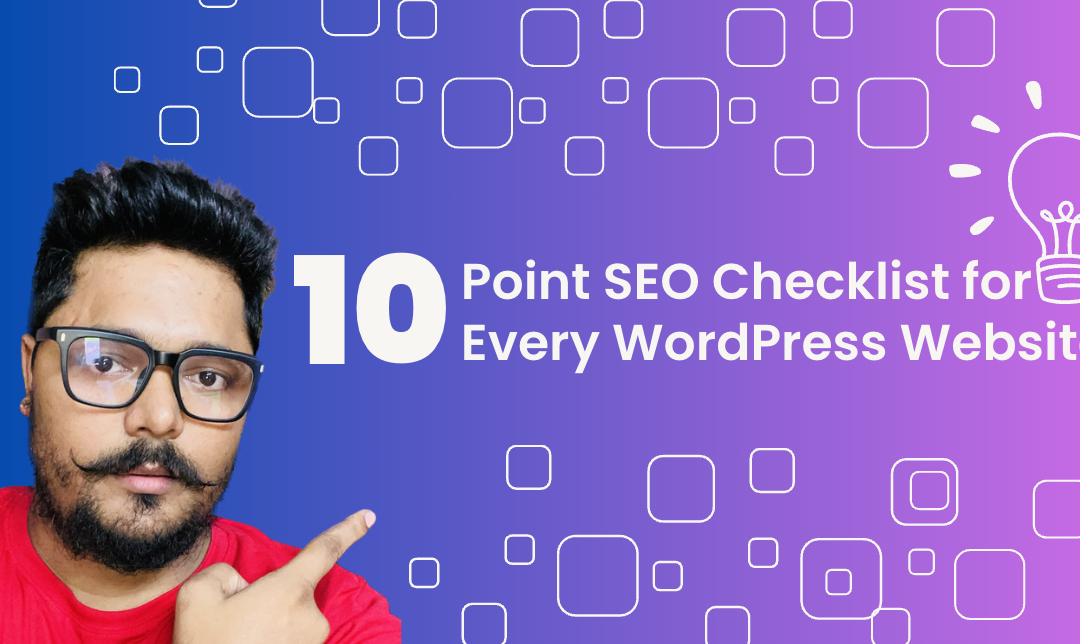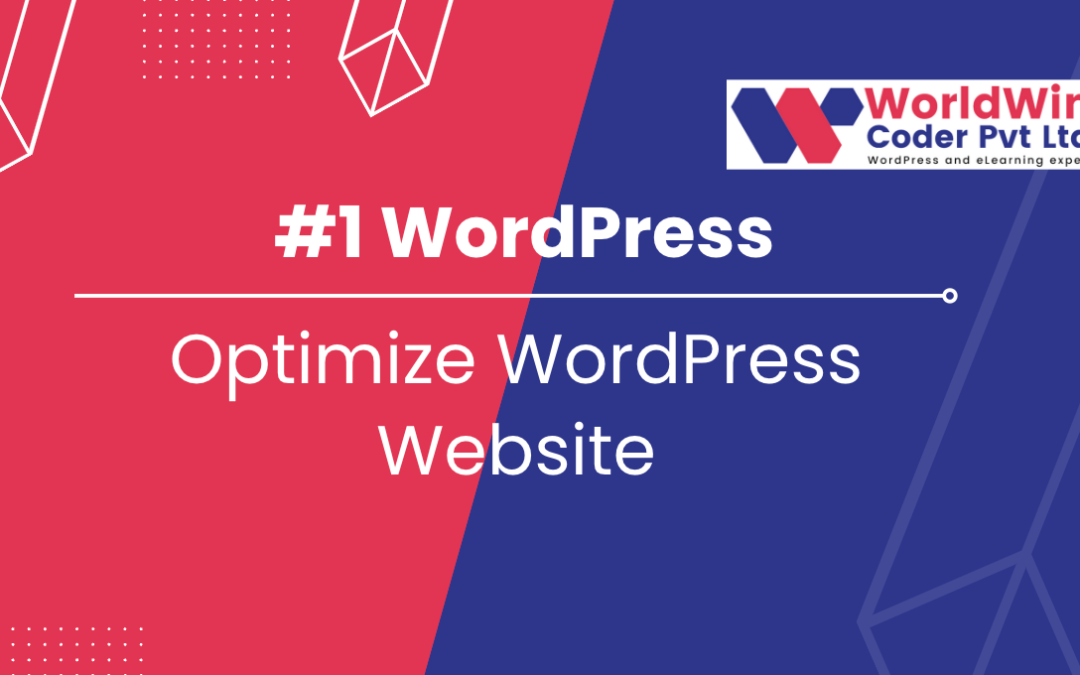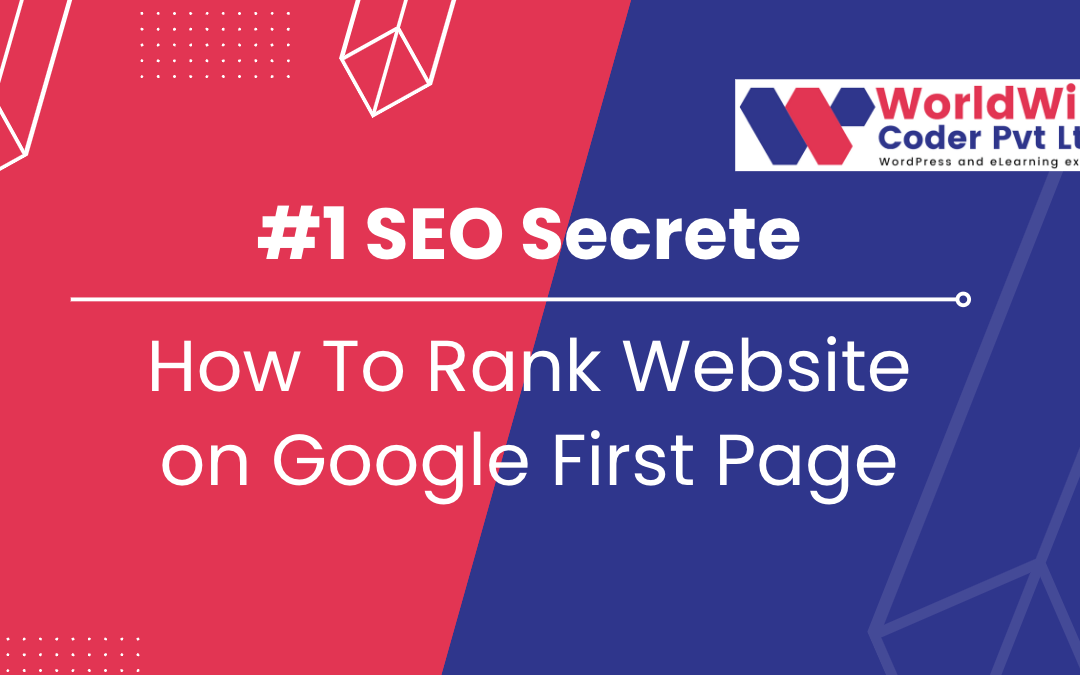
by Vishavjeet | May 8, 2023 | blog, Digital Marketing
A comprehensive SEO strategy is essential for any website looking to improve its visibility on search engines and attract more organic traffic. For WordPress websites, there are specific steps that can be taken to ensure optimal SEO performance. This 10-point SEO checklist provides a framework for website owners to optimize their WordPress sites, from conducting keyword research and on-page optimization to analytics and tracking, user experience, mobile optimization, and local SEO. By implementing these techniques, WordPress website owners can improve their search rankings, drive more traffic to their site, and ultimately increase conversions and revenue.
I. Introduction
- Briefly introduce the importance of SEO for WordPress websites
- Explain that a comprehensive SEO checklist can help website owners ensure their site is optimized for search engines
- State the purpose of the article, which is to provide a 10-point SEO checklist for WordPress websites
II. Keyword Research
- Explain the importance of keyword research in SEO
- Describe how to conduct keyword research using tools such as Google Keyword Planner, SEMrush, or Ahrefs
- Provide tips on selecting relevant and high-traffic keywords
III. On-Page Optimization
- Explain the importance of on-page optimization for SEO
- Provide a checklist of on-page optimization techniques, including:
- Optimizing title tags and meta descriptions
- Including target keywords in headers, content, and image alt tags
- Improving website speed and mobile responsiveness
- Adding internal links and optimizing anchor text
- Using schema markup to enhance search visibility
IV. Off-Page Optimization
- Describe the importance of off-page optimization for SEO
- Provide a checklist of off-page optimization techniques, including:
- Building high-quality backlinks from authoritative websites
- Optimizing social media profiles and sharing website content on social media platforms
- Participating in industry forums and online communities
- Using online directories and business listings
V. Content Creation
- Explain the importance of high-quality content in SEO
- Provide a checklist of content creation techniques, including:
- Conducting comprehensive research and analysis before writing
- Writing engaging and informative content that incorporates target keywords
- Creating content that aligns with user intent and satisfies search queries
- Publishing fresh and original content on a regular basis
VI. Analytics and Tracking
- Describe the importance of analytics and tracking in SEO
- Provide a checklist of analytics and tracking tools and techniques, including:
- Installing Google Analytics and Google Search Console
- Monitoring website traffic and user behavior
- Tracking keyword rankings and backlink profiles
- Conducting regular site audits to identify and fix technical issues
VII. User Experience
- Explain the importance of user experience in SEO
- Provide a checklist of user experience techniques, including:
- Ensuring website design is intuitive and user-friendly
- Optimizing website navigation and menu structure
- Ensuring website content is easy to read and understand
- Providing clear and concise calls-to-action
VIII. Mobile Optimization
- Describe the importance of mobile optimization in SEO
- Provide a checklist of mobile optimization techniques, including:
- Using responsive design to ensure website displays correctly on mobile devices
- Optimizing website speed for mobile users
- Using mobile-friendly navigation and menu structure
- Ensuring all content is accessible and readable on mobile devices
IX. Local SEO
- Explain the importance of local SEO for businesses with a physical presence
- Provide a checklist of local SEO techniques, including:
- Creating and optimizing a Google My Business listing
- Building local citations and business listings
- Encouraging online customer reviews
- Optimizing website content for local keywords and phrases
X. Conclusion
- Summarize the 10-point SEO checklist for WordPress websites
- Emphasize the importance of implementing these techniques to improve search visibility and drive traffic to the website.

by Vishavjeet | Feb 11, 2023 | blog, WordPress
Optimize WordPress website is an important step in improving website performance and user experience. A well-optimized WordPress website will load faster, rank higher in search engines, and provide a better user experience. The optimization process involves several key steps, including choosing a fast and reliable hosting provider, using a lightweight and well-coded theme, minimizing the use of plugins, optimizing images, minimizing HTTP requests, using a content delivery network (CDN), enabling caching, using a lazy load plugin, minimizing external scripts and embeds, and regularly monitoring website performance. By following these steps and making regular improvements, you can ensure that your WordPress website is running at its best and providing a great experience for your visitors.
I. Introduction
- Brief overview of WordPress as a popular website building platform
- Importance of optimize WordPress website for improved performance and user experience
II. Start with a Good Hosting Provider
- Explanation of the role of hosting in website performance
- Recommendation of reliable and fast hosting providers such as Bluehost, SiteGround, etc.
III. Choose a Lightweight WordPress Theme
- Explanation of the impact of the theme on website speed
- Recommendation of lightweight themes such as Astra, Neve, etc.
IV. Minimize the Use of Plugins
- Explanation of the impact of plugins on website speed
- Recommendation of using only essential plugins and using plugins that are well-maintained and frequently updated
V. Optimize Images
- Explanation of the impact of images on website speed
- Recommendation of using tools such as Photoshop or TinyPNG to compress images before uploading to the website
VI. Minimize HTTP Requests
- Explanation of HTTP requests and how they affect website speed
- Recommendation of reducing the number of HTTP requests by combining and minifying CSS and JavaScript files
VII. Use a Content Delivery Network (CDN)
- Explanation of the purpose of a CDN
- Recommendation of using a CDN such as Cloudflare or MaxCDN to serve website content from multiple locations, improving website speed and reducing server load
VIII. Regularly Monitor Website Performance
- Explanation of the importance of regularly monitoring website performance
- Recommendation of using tools such as GTmetrix, Pingdom, etc. to track website speed, identify bottlenecks, and make improvements
IX. Conclusion
- Summarize the importance of optimizing a WordPress website and the steps to do so
- Emphasize the importance of regularly monitoring website performance and making improvements to ensure optimal performance.

by Vishavjeet | Jan 14, 2023 | blog, Digital Marketing
Rank website on Google first page is crucial for any business or individual looking to establish an online presence. With over 3.5 billion searches made every day on Google, appearing on the first page is a surefire way to increase visibility and drive traffic to your website. One of the most important things to understand when trying to rank website on Google first page is that there is no one-size-fits-all approach. However, there are several key factors that will influence your website’s ranking.
On-Page Optimization
- On-page optimization is the process of optimizing the content and structure of your website to make it more appealing to search engines. This includes using relevant keywords in the title tag, meta description, and throughout the content of your website.
- In addition to using relevant keywords, it is also important to make sure your website has high-quality content that is both informative and engaging. This will not only help your website rank higher in search results, but it will also keep visitors engaged and coming back for more.
On-page technical SEO
- On-page technical SEO is the process of optimizing the website’s code to make it more search engine friendly. This includes optimizing the website’s meta tags, header tags, images and website’s load time.
- Make sure your website is mobile-friendly and easy to navigate. Use schema markup, this will help search engines to understand the website’s content better.
What’s Your Website SEO Challenge Right Now?
Let’s Talk
Off-Page Optimization
- Off-page optimization is the process of building high-quality backlinks to your website from other relevant and authoritative websites. Backlinks act as a vote of confidence for your website, signaling to search engines that other websites consider your content valuable.
- The more high-quality backlinks your website has, the more likely it is to rank higher in search results. When building backlinks, it is important to focus on quality over quantity. A few high-quality backlinks from relevant and authoritative websites will be much more beneficial than a large number of low-quality backlinks.
Optimizing for User Experience
- In addition to on-page and off-page optimization, it is also important to focus on optimizing for user experience. This means making sure your website is easy to navigate, loads quickly, and is mobile-friendly.
- Search engines are increasingly placing a greater emphasis on user experience, so it is important to make sure your website is designed with the user in mind.
What’s Your Website SEO Challenge Right Now?
Let’s Talk
Use Google Search Console
- Google Search Console is a free tool offered by Google that allows you to monitor the performance of your website in Google search. With this tool, you can see how often your website is appearing in search results, which keywords are driving traffic to your website, and which pages are receiving the most clicks.
- By using this tool, you can identify any issues with your website, such as crawl errors or broken links, and take action to fix them. This can help to improve your website’s ranking in search results.
Use Google Analytics
- Google Analytics is a free tool that allows you to track the traffic and engagement metrics of your website. With this tool, you can see how many people are visiting your website, where they are coming from, and what pages they are viewing.
- By using this tool, you can identify which pages on your website are performing well and which are not. This can help you to optimize your website for better engagement and conversion rates.
Optimize for Local SEO
- If you want to target local keywords, make sure your website is optimized for local SEO. This means including your business name, address, and phone number (NAP) on your website, as well as creating a Google My Business listing and ensuring that all of your business’s information is accurate and consistent across the web.
Finally, Optimize for Featured Snippets, try to target the featured snippet for your target keyword, this will help you to grab the top spot on google.
It’s important to remember that SEO is a continuous process and it may take time to see the results, and it’s also important to keep in mind that the algorithms that determine search rankings are constantly changing, so what works today may not work tomorrow.
What’s Your Website SEO Challenge Right Now?
Let’s Talk



